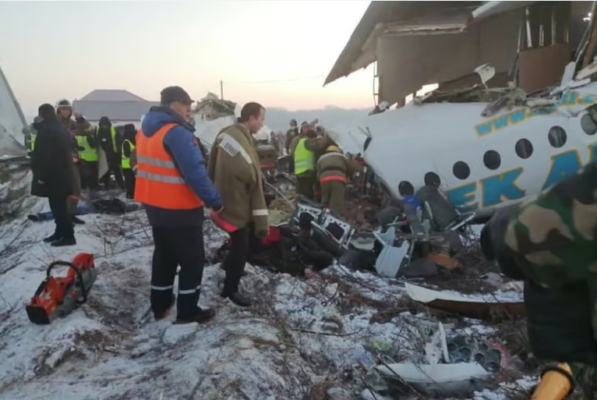A Look into the Incident, Investigations, and Aviation Safety Concerns
A Russian military transport plane carrying 15 individuals tragically crashed during takeoff from an air base in western Russia on Tuesday, sending shockwaves through the nation’s defense establishment. The Defense Ministry confirmed the crash of the Il-76 aircraft, which included eight crew members and seven passengers, in the Ivanovo region. As authorities rushed to the scene, questions arose about the cause of the crash and the fate of those on board.
Initial reports indicated that there were no survivors, casting a somber mood over the Ivanovo region and prompting expressions of condolences from local officials, including Ivanovo Gov. Stanislav Voskresensky. While there were no reports of damage on the ground, the incident raised concerns about aviation safety and the reliability of military aircraft.
The Defense Ministry swiftly launched an investigation into the crash, with early indications pointing to an engine fire during takeoff as the likely cause. A team of investigators was dispatched to Ivanovo to conduct a thorough probe into the circumstances surrounding the crash. As the nation mourned the loss of life, attention turned to the safety protocols and maintenance procedures for Russia’s fleet of military aircraft.

Video footage circulated by Russian media depicted the harrowing moment when the aircraft descended, with at least one of its engines engulfed in flames. The sight underscored the dangers faced by aircrew and passengers alike, highlighting the need for stringent safety measures and vigilant maintenance practices.
The Il-76, a venerable four-engine heavy-lift transport plane, has served in the Soviet and Russian air force since the 1970s. Its long-standing service history and robust capabilities have made it a cornerstone of Russia’s military transport fleet. However, the recent crash has reignited discussions about the aging aircraft’s reliability and the need for modernization efforts.
Tuesday’s tragedy occurred against the backdrop of heightened tensions between Russia and Ukraine, with the Defense Ministry reporting dozens of attacks on Russian territory by Ukrainian drones. While the exact connection between these events remains unclear, military experts have noted a concerning trend of increased Russian military flights coinciding with a rise in aviation incidents.
Analysts have pointed to the intensified fighting in Ukraine as a contributing factor to the surge in military air operations, placing additional strain on aircraft and aircrew. The mounting pressure on Russia’s military infrastructure underscores the importance of rigorous maintenance procedures and comprehensive training programs to mitigate the risk of accidents.
As the investigation into the crash unfolds, attention will undoubtedly focus on identifying the root causes and implementing corrective measures to prevent similar tragedies in the future. The safety of military personnel and the reliability of aircraft remain paramount concerns, requiring a concerted effort to address systemic issues and ensure the integrity of Russia’s aviation capabilities.
In the wake of this devastating incident, the Russian government faces renewed scrutiny over its handling of aviation safety and the modernization of its military fleet. The lessons learned from this tragedy must inform future policies and investments aimed at enhancing the resilience and effectiveness of Russia’s defense infrastructure.
Read More News:
- Honoring Flaco: Central Park Memorial Service Celebrates the Legacy of a Free-Spirited Owl
- Powering the Future: Solar+Storage Revolution in Oregon, Ohio
As the nation mourns the loss of those aboard the ill-fated transport plane, there is a collective determination to honor their memory by striving for greater accountability, transparency, and safety within the Russian military aviation sector. Only through steadfast commitment to these principles can Russia honor the sacrifices of its fallen heroes and safeguard the future of its armed forces.
